
Work in Trello doesn’t always need to be so manual. Let our built-in automation take care of the busy work for you!
Communication between team members has never been easy. And as more workplaces shift to hybrid and remote teams, there may be communication between in-person employees that remote team members miss. Every team member, no matter where they are located, should be able to get project details and context they need to complete their work.
In current state, employees spend an average of three hours a day wasted on completing tasks that can be automated. What if you could automate processes on your boards based on information in Trello? Yeah, we know, that would be amazing. And the good news is it’s totally possible! That’s where Custom Fields come in.
Wait, What Are Custom Fields?
Great question.
Custom Fields are available within our Trello Standard, Trello Premium and Trello Enterprise editions. In short, Custom Fields provides additional input boxes so you can keep project information visible and add more structure and context on a Trello card.
Use them to add contact information, status updates, and additional due dates, just to name a few. You can format them as drop down options, text fields, check boxes, or calendar dates.
Once enabled, on a card back they look like this:

On a card front, they look like this:

This additional context is often very helpful to get a quick visual overview of key information about a card. But what if you could fully automate processes on a board based on this information?
Here’s how:
At Your Service: Your Butler For Personal Custom Fields
Butler is Trello’s built-in automation feature that allows you to set up “rules” in plain English that will then result in automated actions.
For example, you can set a Butler rule that says, “When the due date is marked as complete in a card, move the card to list “Done:”‘
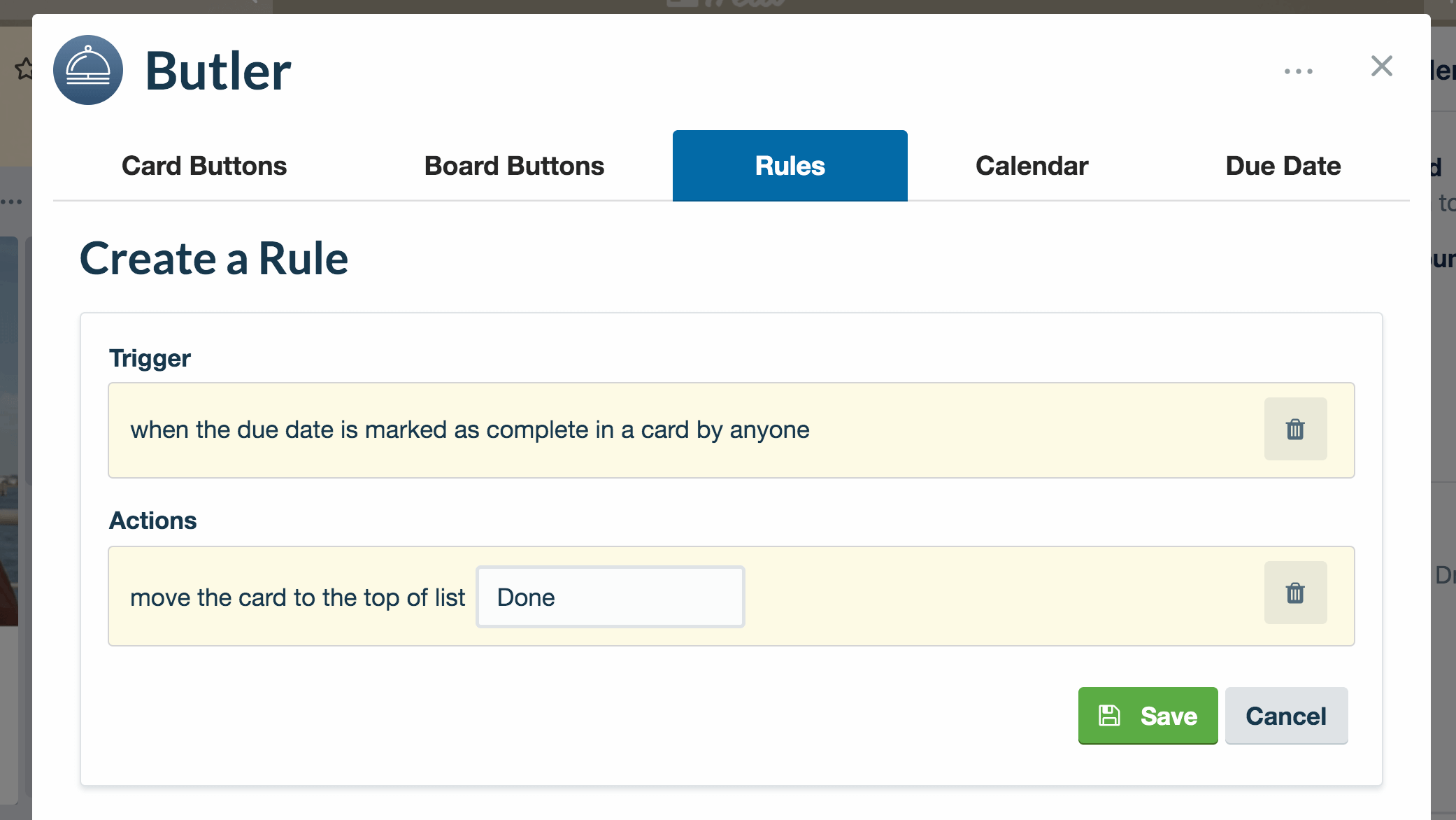
You can also set up card or board “buttons” in Butler that are essentially rules that require the click of a button to enact:
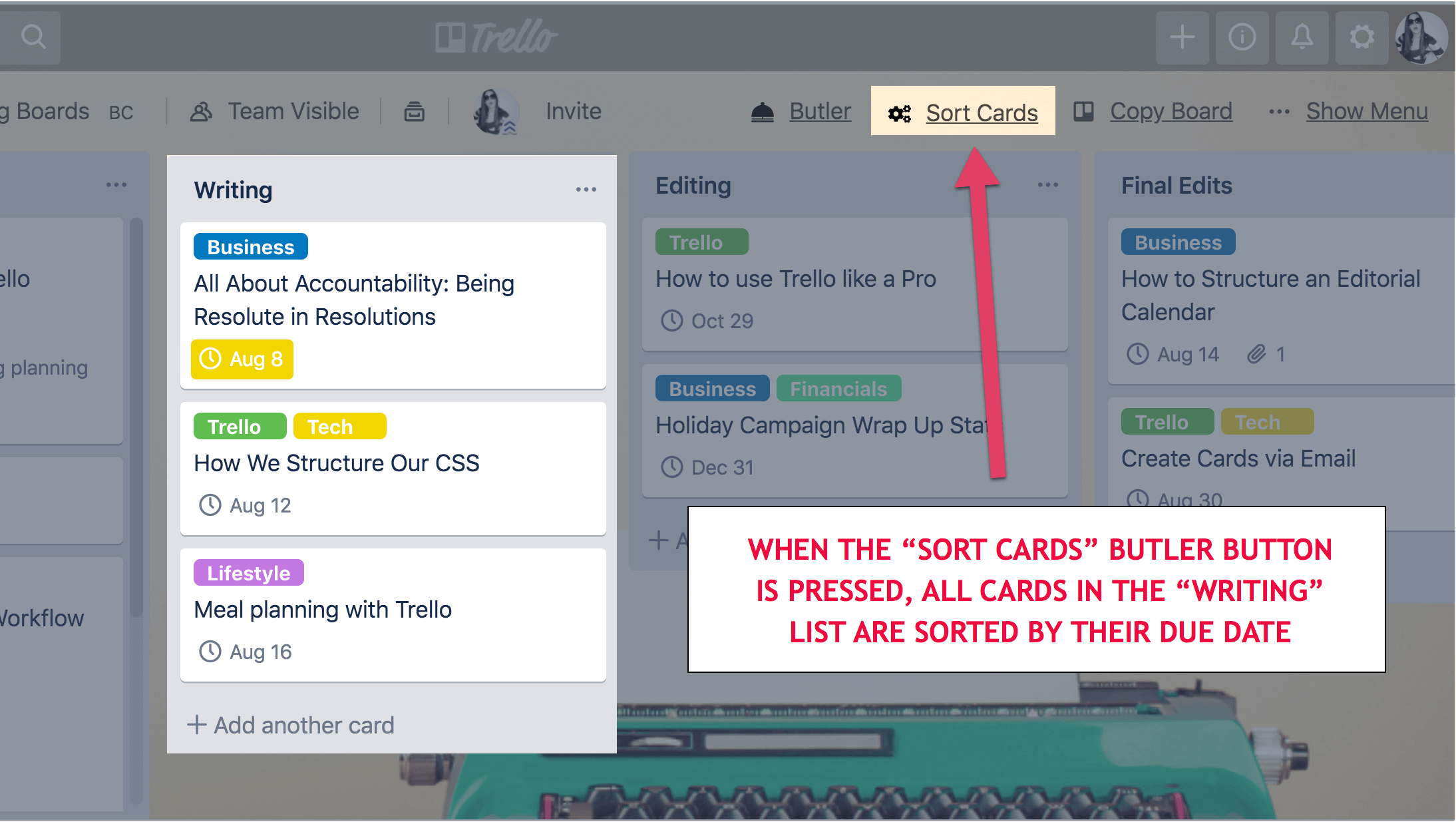
Butler helps you refine the manual upkeep of a Trello board flow.

When you add Custom Fields to a Butler workflow, your boards become even more powerful.
Here are some examples in action:
Agile Workflows
If you are using Trello in an agile workflow, you can set Custom Fields for:
- Priority: A drop down list
- Points: A numerical value
- QA inspection: A checkbox
- Estimate in days: A numerical value
- Start date: A date
It would look something like this:
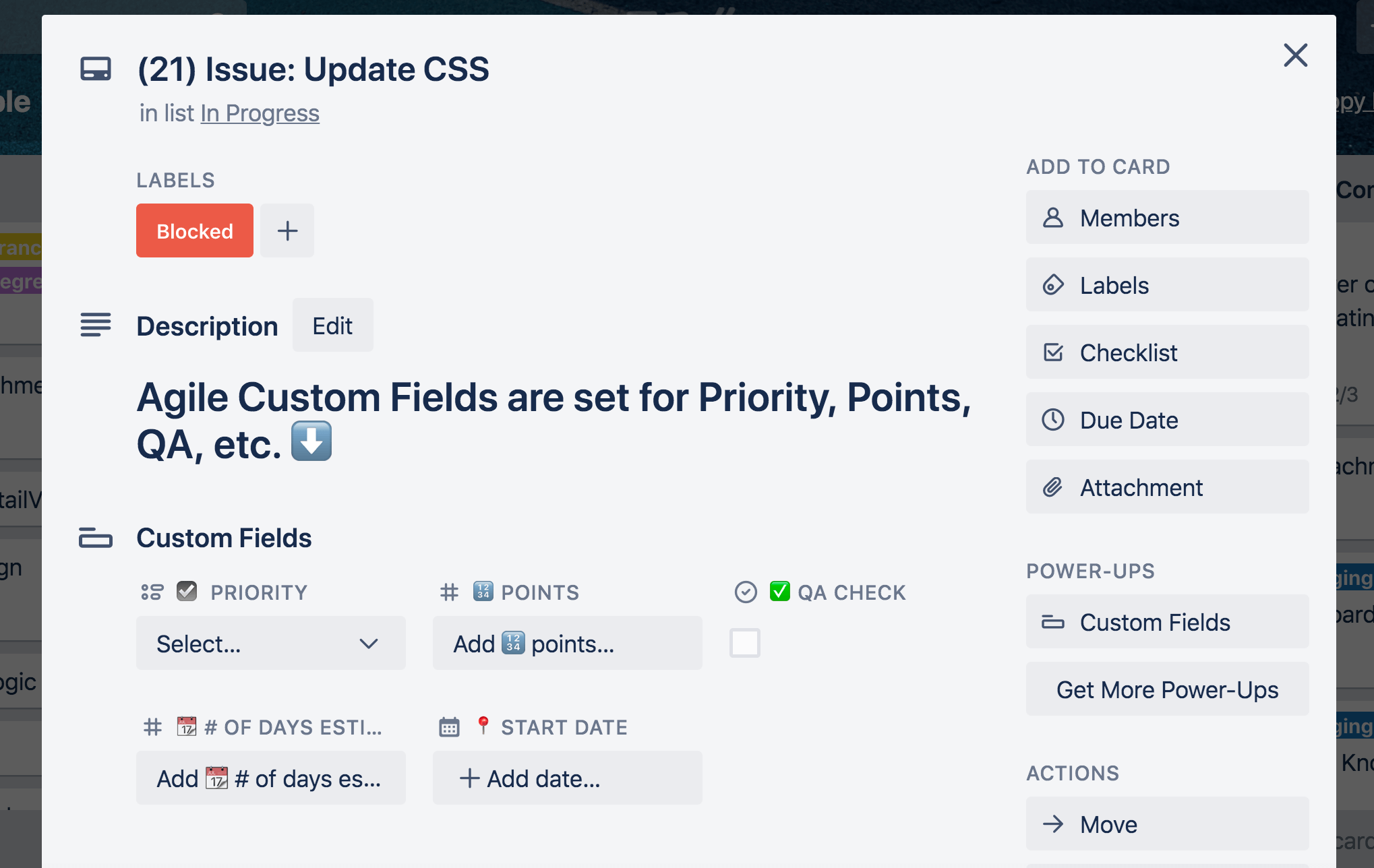
You can then set up a Butler rule to automatically update the due date of the card, based on what is set for the Start Date:
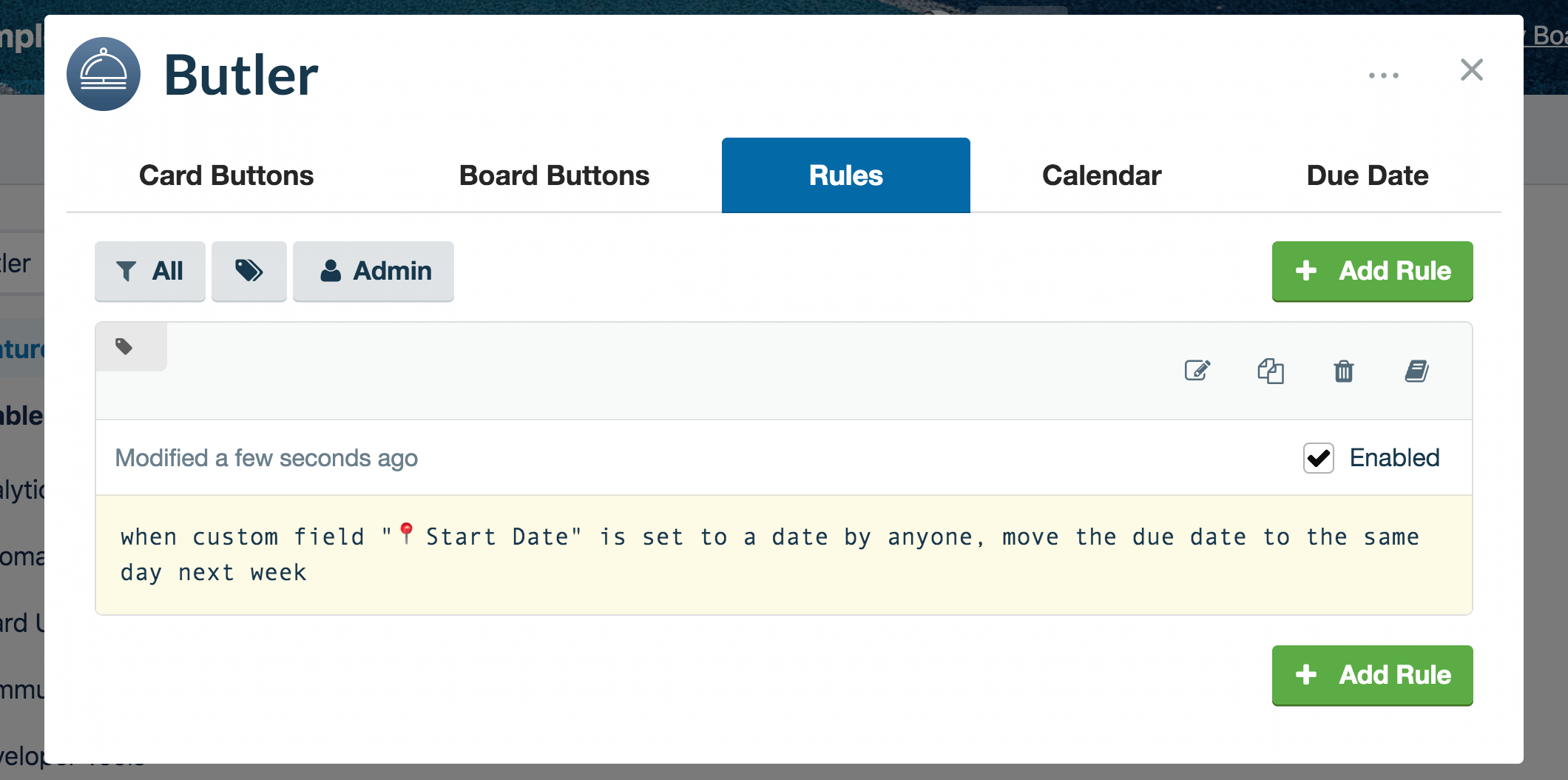
In the above example, every time a due date is set in the Custom Field “Start Date,” a Butler rule automatically sets the due date of the card to one week after the “Start Date.”
Checkbox Automation
You could also set a rule where once someone checks the “QA Passed” checkbox, the card is automatically moved into the “Ready For Production” list and a member of the server team is tagged.
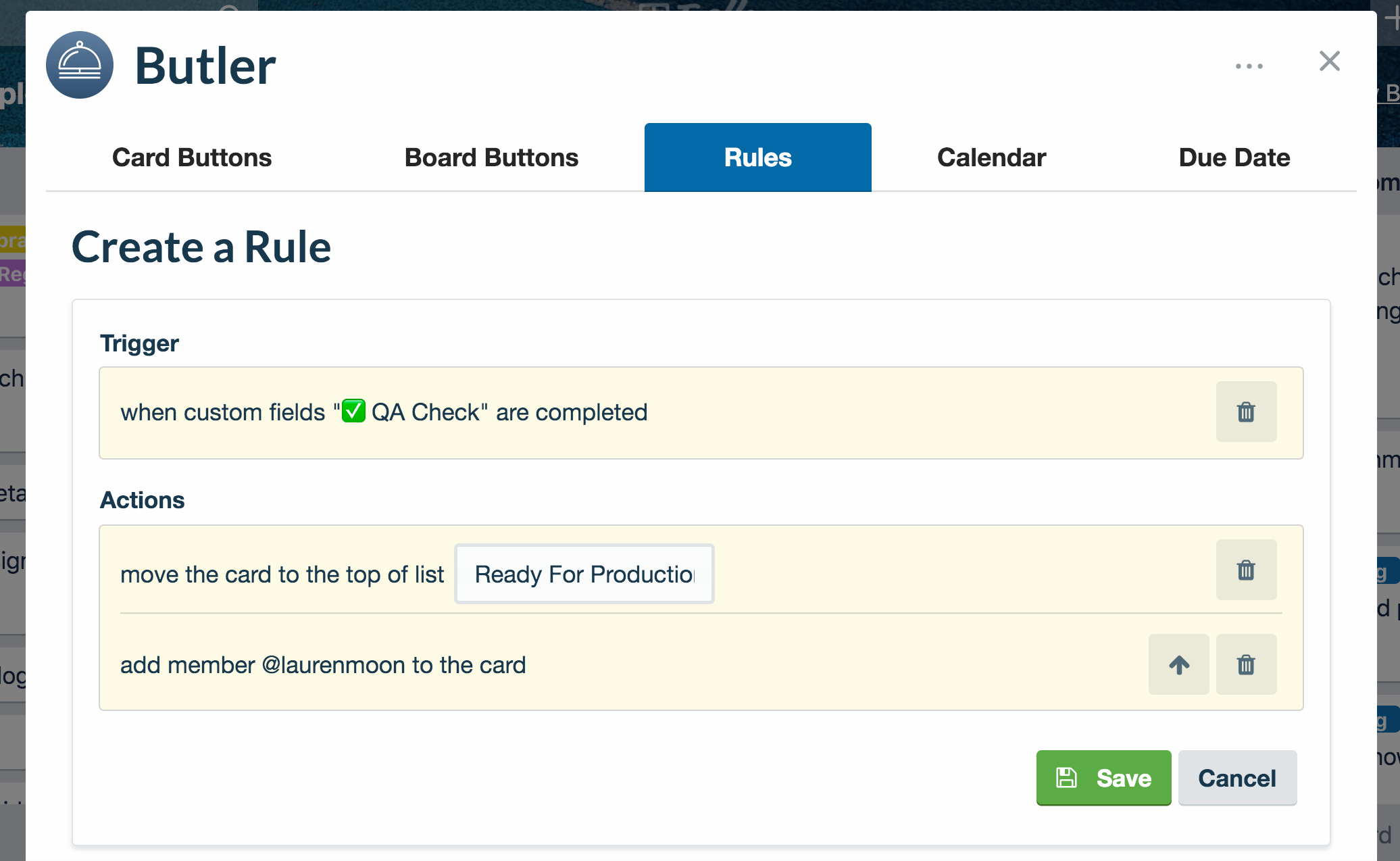
When the Custom Field checkbox is clicked, multiple actions are triggered.
Another option is to create a Butler button to set or increase the Points value in a Custom Field.
So let’s say a project went from a simple idea to a more complex implementation. You can add a Butler button named “Project Expanded.” Set it so that when clicked, the Points value Custom Field increases.
Adding Approvers And Advancing Due Dates
Let’s say you’re running an editorial calendar workflow in Trello. You can set Custom Fields for:
- Author: A text field
- Editor: A text field
- Editor approval: A checkbox
- Draft due: A date
It would look something like this:

For example, you have a list on your EdCal board called “Incoming Pitches” that is designed for people to add cards with their ideas for new posts. You can set a Butler rule that says that anytime a new card is created on the “Incoming” list, an Editor is automatically added from a rotating list.
You can set your list of rotating editors as members on a title card in the list. When setting it up in Butler, it will look like this:
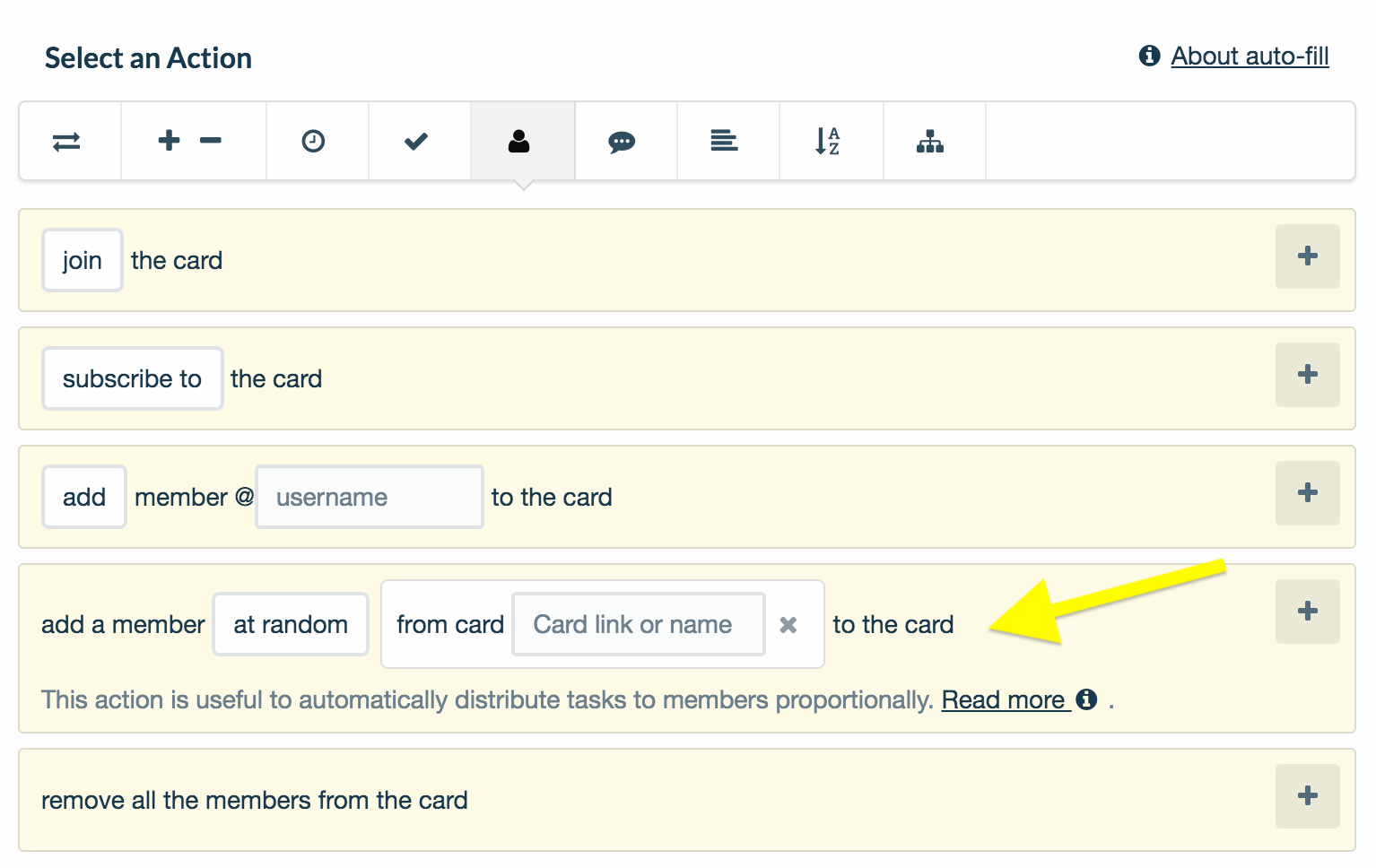
And Butler will choose your editors from the members of a card like this:

You can also add a Butler button titled “In Progress.”
When the writer is ready to begin working on their draft, they (or an editor) can hit the “In Progress” button which can automatically set a date in the Draft Due field for exactly two weeks later (or any time interval of your choosing!). That gives the writer enough time to work on the draft, but still maintains accountability.
Sort Cards By Custom Fields Data
You can also choose to sort cards based on Custom Fields data. For example: all cards have a Custom Field on them for “Assigned” where a person’s name is inputted to indicate they are the owner of the project.
You could set a Butler rule such that every Monday at 9 am, you can sort the list based on the contents of the Custom Field. This way, ones with an empty value in the “Assigned” field will appear at the top. This way, you know which cards aren’t currently being worked on by anyone.
Automate Commands Based On A Dropdown Menu
You can also take advantage of the dropdown menu option in Custom Fields.
Let’s say you’re part of a Sales team. A member of your support team makes a card on your “Incoming” list to say that a customer has requested a demo of your product or service. The support team member can select “Demo request” from a dropdown menu of sales team functions.

You can have a Butler rule set up so that every time “Demo request” is selected from the dropdown menu, a person on the sales team is assigned to the card, and a comment is automatically inputted that says something like:
“Hey @[person assigned], this customer would like a demo! ”
You could even have it set to automatically add a checklist to the card of all the necessary steps and requirements for getting a demo set up.
Rely On The Robots To Power Your Trello Boards
Your Trello workflows can become even faster and more powerful when you rely on automation to distribute little tasks across your boards. Hopefully these examples have inspired you to take your Butler and Custom Fields usage to the next level.
Try Custom Fields for free
Custom Fields are included for all paid Trello Standard, Trello Premium, or Trello Enterprise users. Try Trello Premium for free for 14 days to test advanced checklists and numerous other features to help you get the most out of Trello.
